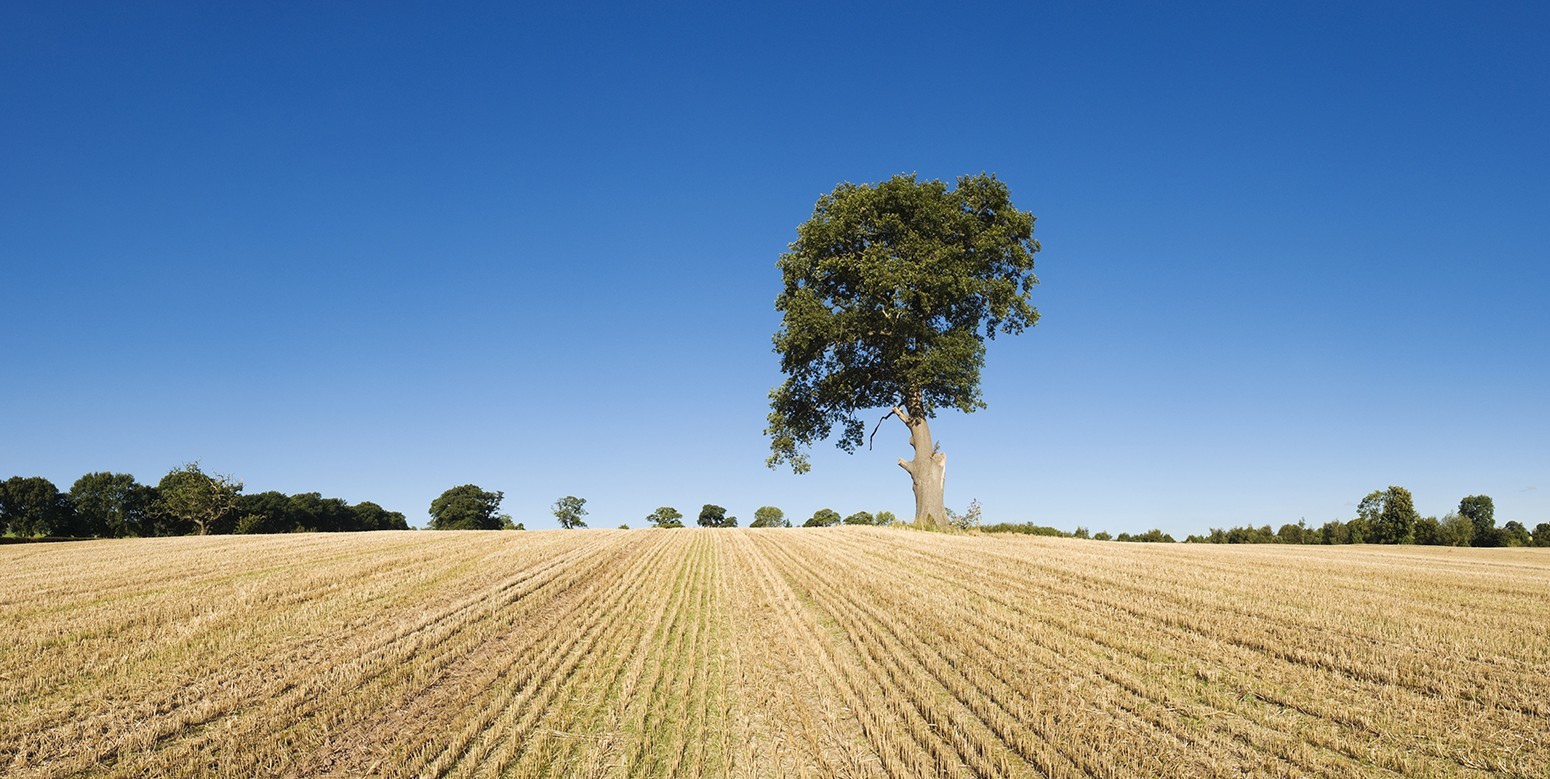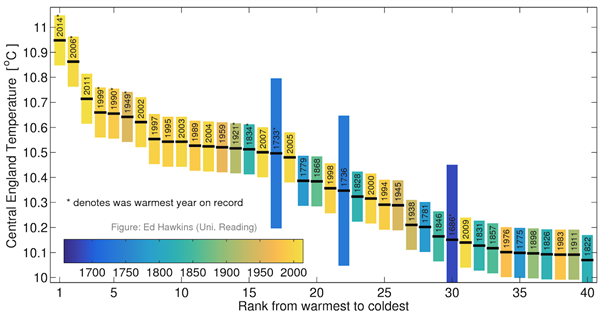
Climate change made England’s record hot year in 2014 at least 13-times more likely
Robert McSweeney
05.01.15Robert McSweeney
01.05.2015 | 10:30amLast year was England’s hottest year since records began over three and a half centuries ago, the Met Office revealed in January. Now a new study shows that this record-breaking year was at least 13-times more likely because of human-caused climate change.
And as our influence on the climate becomes more evident in the future, we can expect the chances of record hot years to increase further, the lead author tells Carbon Brief.
Hottest year
Stretching back over three and a half centuries, the Central England Temperature (CET) record is the longest instrumental record in the world. It provides daily and monthly temperatures averaged over a roughly-triangular area between London, Bristol and Lancashire.
With an average temperature of 10.93C, 2014 topped the list as England’s hottest year, just edging ahead of the 10.87C recorded in 2006. Since the difference between the two numbers is smaller than the error associated with these types of measurements, scientists can’t be absolutely sure that 2014 was the warmest year – but it’s the most likely to be.
40 highest-ranked years from warmest to coldest of the Central England Temperature record. Colours show the time period of each year, and height of the bar shows the uncertainty in the measurement. Source: Dr Ed Hawkins of Reading University. Source: Dr Ed Hawkins of Reading University
The new study, published in Environmental Research Letters, finds that this record year was made much more likely because of human-caused climate change.
Having such a long, complete record makes the CET ideal for attribution studies, lead author Dr Andrew King, from the University of Melbourne, tells Carbon Brief:
“In order to perform a study such as this one we need high-quality observations, climate model simulations able to capture the temperature variability in the region, and an interesting event to study. For central England in 2014 we had all of those things.”
Two approaches
The researchers used two approaches to see how climate change is affecting the likelihood of a record hot year.
First, they ran a set of climate models for two different simulations: one with only natural influences on the climate and the other with both human and natural impacts.
By comparing the results, the researchers calculated that England is 13 times more likely to get a year as warm as 2014 when human influences are included in the model.
For the second approach, the researchers compared the number of very warm years in the current climate with 100 years ago, largely before the effects of climate change were being felt. This second method showed that a record year is now at least 22 times more likely.
Despite the different approaches, the results are consistent, says King. Prof Gabriele Hegerl, a professor of climate system science at the University of Edinburgh who wasn’t involved in the study, agrees. She tells Carbon Brief:
“They both come to very similar conclusions, namely that the long-term warming in the Central England timeseries has made record years much more likely than they would be without the long-term warming.”
Climate change signal
In a study covered by Carbon Brief earlier this week, scientists found that three-quarters of hot days worldwide are attributable to climate change. But it’s much more difficult to identify the influence of climate change for smaller areas, as the new study does, says King:
“When studying smaller regions of the world we tend to see greater variability in their climate. This makes teasing out a clear climate change signal harder to do.”
Examining entire years rather than just days reduces this variability and makes the climate change influence clearer, says King. But the findings were still surprising, the paper notes:
“It’s remarkable that such a substantial anthropogenic influence can be found for an annual extreme in a region as small as central England.”
Dr Nikos Christidis from the Met Office, who authored a similar study of European heatwaves last year, says this is a well-understood feature of how changes in average temperatures affect extremes:
“What might seem relatively modest rises in temperature around the world are causing quite dramatic increases in the likelihood of extreme temperatures.”
As the climate change signal becomes more evident with rising global temperatures, the chances of annual records being broken will become even more likely, warns King.
Main image: Parched arable farmland.
King, A. D. et al. (2015) Attribution of the records high Central England Temperature of 2014 to anthropogenic influences, Environmental Research Letters, doi:1748-9326/10/5/054002
-
Climate change made England's record hot year in 2014 at least 13-times more likely


